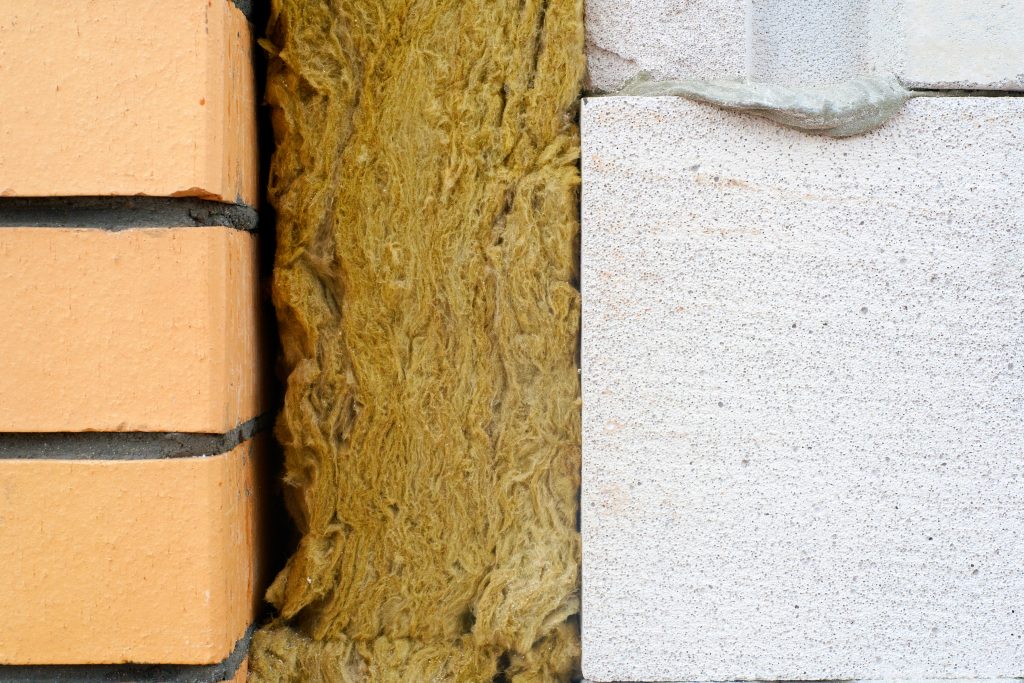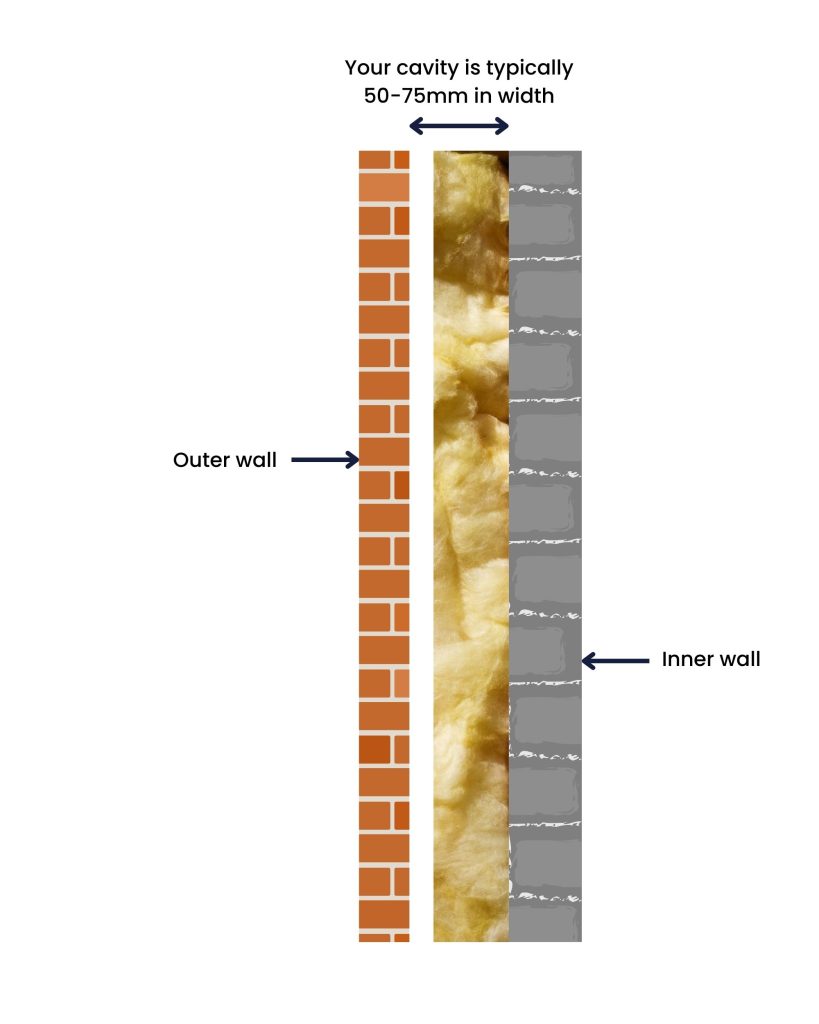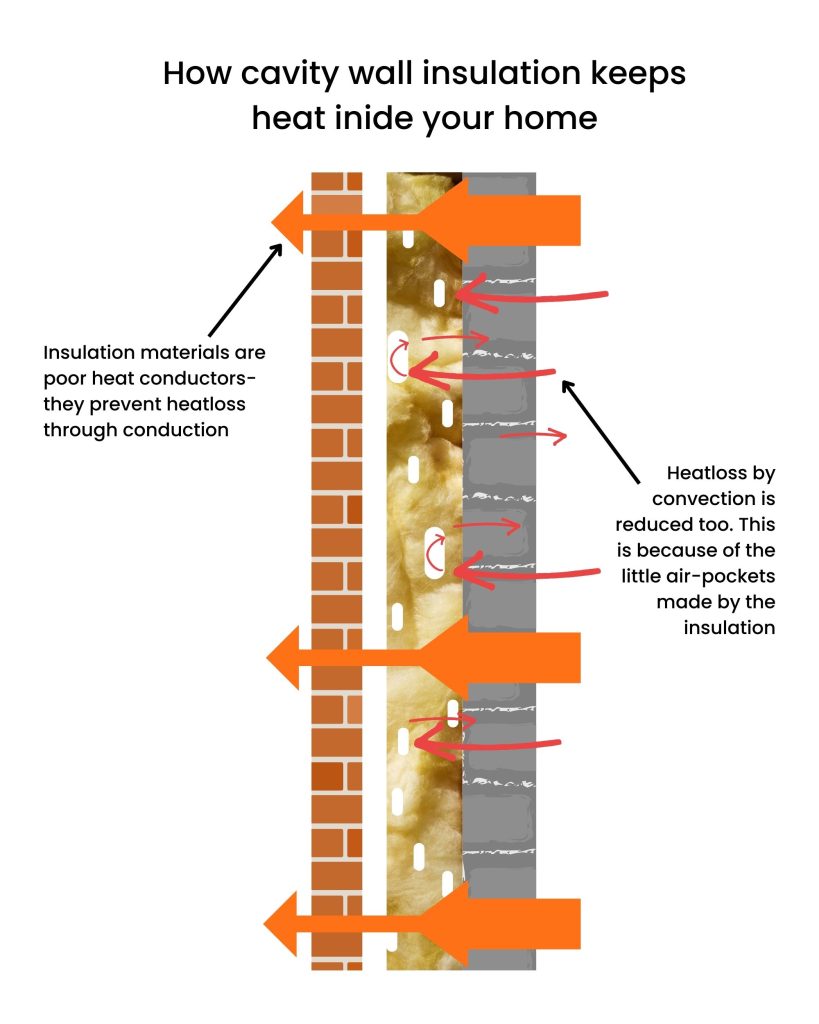
It keeps your home cosy and warm, but how? Are you thinking of investing in cavity wall insulation, or maybe you’re learning about insulating properties in school? Whatever the reason, you should know how cavity wall insulation has its effect. You can find out right here, explained in the best way possible (with pictures too), how cavity wall insulation works on keeping the heat inside your home, and reducing your energy bills. After taking a few minutes to read our easy peasy article, you’ll be nothing short of an expert on how cavity wall insulation does its job.
If your home was built after the 1920s, it’s likely that your walls are cavity walls, instead of solid walls. So, what is a cavity wall? A cavity wall consists of two layers. The outer wall of your home and the inner wall of your home. These are also known as ‘leaves’ or ‘skins’ in more technical terms. In between these two leaves lies your cavity, which will normally be around 75mm in width. When the cavity is empty, it’s easy for cold to enter your home and for heat to escape.

What can be done about that? Cavity wall insulation, of course! It reduces heat loss by lowering the thermal conductivity of your walls. A large range of materials can insulate a cavity, from polystyrene beads, to mineral wool. One of these cavity wall insulation materials is then installed into the gap between the leaves of your home, and slows down the loss of heat.
(what is thermal conductivity? It’s a λ-value that says how easily a material can allow the transfer of heat. So, when it comes to your walls, the lower the λ-value, the better, because heat won’t escape easily).
These are three ways in which heat can be transferred, or thermodynamics. Long story short;
Conduction is the process of heat transfer by direct contact, i.e., molecular collision, through solid objects. This usually occurs as molecules going from a high-temperature area, to a low-temperature area.
Convection transfers heat through fluid currents, either liquids or gas, by intermediate medium. Normally this movement of heat travels from an area of low-density to an area of high-density.
Radiation is the mechanism of heat transfer through electromagnetic waves, quickly, through the vacuum of space. This means it does not heat up the surrounding medium.

Cavity wall insulation helps inhibit the transmission of heat through conduction and convection. Insulating materials tend to have a low λ-value, which means they aren’t good heat conductors. This results in cavity wall insulation inhibiting the transfer of heat out of your home by conduction, and keeps the heat inside your home. Cavity wall insulation also fills up the cavity in your walls with little air pockets. Heat transfer by convection is then reduced a lot because it stops large convection currents to develop. Less heat then travels to the outside wall, meaning that convection on the outside of the building is reduced too.
*Note* that insulating materials on their own cannot stop heat transfer by radiation. However, some of the insulating materials are fitted with foil on them too. This reflects any form of heat radiation, keeping it inside your home.
In less than a minute, you can enquire to book a free survey with us for your cavity wall insulation! On the same day of your survey, you can get a free quote too, and decide if you want to invest in a warmer home whilst saving on your energy bills.

We help families across the UK create energy-efficient homes by providing insulation solutions and heating Upgrades. —helping you save energy, reduce costs, and lower your carbon footprint.
External Links: EST, Trustmark , GOV
About
Company Registration Number
12684594